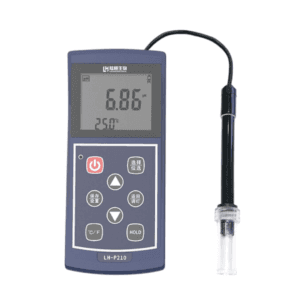$1,920.00 – $2,250.00Price range: $1,920.00 through $2,250.00
The Tissue Microtome Knife & Blade Holder is a versatile and safety-focused holder designed to accommodate both low-profile disposable blades—and high-profile blades via customization.
The holder features a horizontal blade movement mechanism that minimizes the risk of accidental contact with the blade. Additionally, it enables each blade to be used to its full capacity by allowing three equally divided specimen cuts per blade edge.

Conduct Science is a premier manufacturer of research infrastructure, born from a mission to standardize the laboratory ecosystem. We combine industrial-grade precision with a scientist-led tech-transfer model, ensuring that every instrument we build solves a real-world experimental challenge. We replace "home-brew" setups with validated tools ranging from microsurgical suites to pathology systems. With a track record of >1,600 institutional partners and hundreds of citations, our equipment is engineered to minimize human error. We help you secure more data for less of your budget, delivering the reliability required for high-impact publication.

bool(false)

bool(false)

bool(false)
Compatible with low-profile disposable blades; customization available for high-profile blades.
Designed to fit Thermo and Leica microtome machines.
The blade holder allows horizontal movement, reducing the risk of accidental blade contact.
Each blade can be used to produce three evenly sectioned specimens, maximizing the efficiency of the cutting edge.

Upgrade your lab equipment with the Tissue Microtome Knife & Blade Holder, designed for accuracy, safety, and maximum efficiency. This versatile holder works perfectly with low-profile blades, while offering custom options for high-profile blades to match your workflow. Compatible with Thermo and Leica microtomes, it delivers seamless performance across leading systems.
Engineered for safety, the holder features horizontal blade movement that protects users from unintended contact. At the same time, it helps you get the most out of your consumables—each blade can cut three evenly divided specimens, making every edge last longer and reducing replacement costs.
Whether you’re running a clinical pathology lab, a research facility, or a teaching institution, this blade holder ensures precision cutting, enhanced safety, and cost-effective performance. Built to meet professional laboratory standards, the Roundfin holder is the perfect choice for reliable and efficient tissue sectioning.
Dual compatibility – Designed for low-profile disposable blades, with the option to customize for high-profile blades. This gives laboratories flexibility depending on equipment and workflow.
System integration – Fully compatible with Thermo Scientific and Leica microtomes, two of the most widely used systems in histology labs.
Enhanced safety – The horizontal blade movement minimizes the risk of accidental operator contact with the cutting edge.
Maximized blade efficiency – Each blade edge can be divided into three equally usable cutting areas, prolonging blade life and reducing replacement costs.
Cost-effective versatility – A single holder works with multiple blade formats, eliminating the need to purchase different mounts and reducing operational expenses.
High-profile blade customization – Support for high-profile blades is not standard and must be requested as a customized option.
Brand-specific compatibility – While it works with Thermo and Leica systems, compatibility with other microtomes is not explicitly guaranteed.
Sliding mechanism wear – The horizontal movement system improves safety but could require periodic maintenance or adjustment over long-term use.
Ensure the microtome is turned off and the handwheel lock is engaged.
Wear laboratory gloves and clean the holder and blade area with a lint-free cloth and ethanol or acetone to remove dust, wax, or protective oil.
Insert the disposable blade (low-profile or customized high-profile) into the designated slot.
Secure the locking mechanism until the blade is firmly held in place.
Keep the handwheel locked during installation to avoid accidents.
Fix the paraffin block securely in the specimen clamp.
Align the block surface so it is level with the blade edge, avoiding curved or tilted positions.
Adjust the clearance angle (commonly 5°–10° depending on tissue type).
Rotate the handwheel smoothly and continuously; avoid stopping mid-cut to prevent irregular thickness or artifacts.
Use the blade in three stages: shift the holder slightly to utilize each third of the edge, ensuring maximum cutting efficiency per blade.
After sectioning, lock the handwheel.
Remove the blade carefully and store it in a protective case.
Clean the holder of paraffin residues and disinfect if necessary.
Regularly check holder stability and locking strength.
Clean and inspect after each session to prevent buildup of paraffin or debris.
| Profile | Low profile, High profile |
|---|
There are no questions yet. Be the first to ask a question about this product.